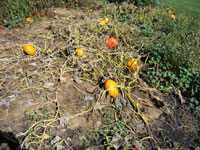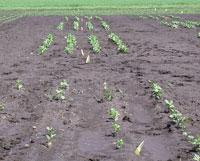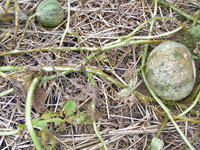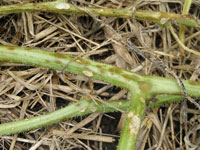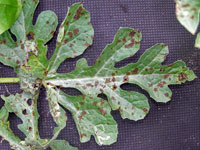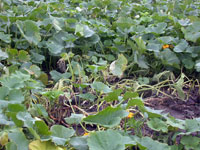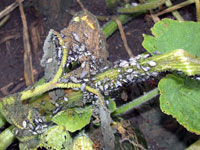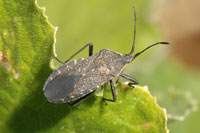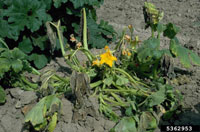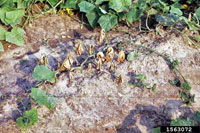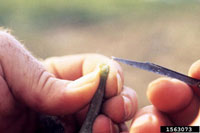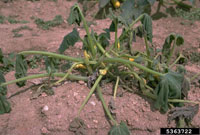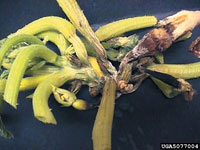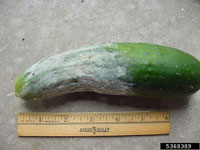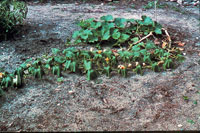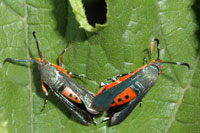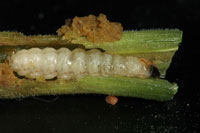Extension > Garden > Diagnose a problem > What's wrong with my plant? > Fruit > Melons > Wilting/drooping leaves
Melons > Leaves > Wilting/drooping leaves
1 of 6
Cold Temperature
- Weather has been cold (below 50°F) and wet
- Soil is cold (below 62°F) and damp to the touch
- Leaf edges turn olive green to brown
- In severe cases entire leaves, young shoots or the entire plant may be completely discolored and wilted
- More information on Cold temperature
2 of 6
Anthracnose
Colletotrichum obriculare
- Cantaloupe is very susceptible and entire vines may wilt due to vine infections
- Leaf spots are dry reddish brown, somewhat circular and can grow to ½” across
- In watermelon leaf spots are dark brown, almost black and smaller
- Sunken elongated reddish brown lesions form on vines, and may exude a gummy fluid
- Circular sunken dark spots on fruit, salmon colored spores form in the center when wet
- Commonly appears mid to late season
- More information on Anthracnose
3 of 6
Squash Bug
Anasa tristis
- Feeding can cause yellowing and wilting
- More common on squash and pumpkins than melons
- Adults are 5/8 inch long, somewhat flattened, and gray to dark brown with alternating orange and brown stripes on the edges of their abdomen
- Nymphs are 1/10 to 1/2 inch and are a light to dark gray color
- Active from May through September
- More information on Squash Bug
4 of 6
Bacterial Wilt
Erwinia tracheiphila
- Leaves first appear dull green, wilt during the day, and recover at night
- Eventually wilted leaves die
- Wilt progresses down the vine until entire vine is wilted or killed
- Striped or spotted cucumber beetles will be present in the garden
- Cucumbers and muskmelon most commonly affected (pumpkins and squash less affected)
- More information on Bacterial Wilt
5 of 6
Phytophthora Blight
Phytophthora capsici
- The entire plant may collapse if root and crown rot occurs
- Stem and leaf petiole lesions are light to dark brown, water soaked and irregular
- Large irregular brown spots on leaves
- Fruit develop soft, water-soaked lesions which expand to large sections of the fruit
- Infected fruit are soft, easily punctured and often collapse
- Infected fruit are covered with white fungal growth
- More information on Phytophthora Blight
6 of 6
Squash Vine Borer
Melittia cucurbitae
- Feeding by larvae causes yellowing of leaves and wilting
- Holes filled with green to orange excrement near the base of the plant may be present
- Less common on melons
- Adult borer resembles a wasp, is active mid-June through July
- More information on Squash Vine Borer



